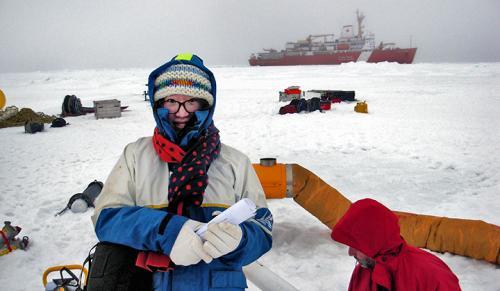
In Reina Maruyama’s line of work, you can’t call yourself a real scientist until you’ve flirted with frostbite while scouting for subatomic particles at the South Pole.
Bone-chilling cold is almost a rite of passage for certain areas of research, from forestry and geology to environmental biology and Maruyama’s discipline, physics. First come the parka and gloves and then, the researchers hope, come publication and glory.
“I was there during the ‘summer’ in Antarctica. The temperature hovers around -20 degrees,” explained Maruyama, an assistant professor of physics and scientific spokesperson for the DM-Ice experiment. “The South Pole has two environmental factors that make it challenging to work there: temperature and altitude. We used extreme cold-weather clothing issued by the National Science Foundation, which operates the South Pole Station. Boots have very thick soles with room for extra footbeds for added insulation from the ice. It’s more difficult to deal with altitude. At 10,000 feet, one has to be very careful not to overexert oneself, especially the first few days of being there. We walk slowly, with no physical exertion for the first couple of days.”
Maruyama’s research has taken her to the South Pole twice to work on the international physics projects IceCube and DM-Ice. IceCube is a neutrino detector; DM-Ice is looking for dark matter.
The South Pole is perfect for such activities, the Yale scientist explains, because the experiments require a thick covering of rock or soil to shield cosmic rays, and large areas of stable, transparent material, such as ice, in order to detect the light given off during particle interactions. “We constructed small huts to work in when working for extended lengths of time away from the station,” Maruyama said. “During the summer, the sun is up 24/7, so one can build a fairly efficient solarium which cuts down on the fuel consumption needs.”
Of course, Maruyama is hardly alone in her frozen bona fides. She is joined by a number of Yale faculty members, students, and staff who have conducted research in extremely cold conditions. For them, cold weather is an essential part of any meaningful fieldwork. It also leads to some primo personal stories.

